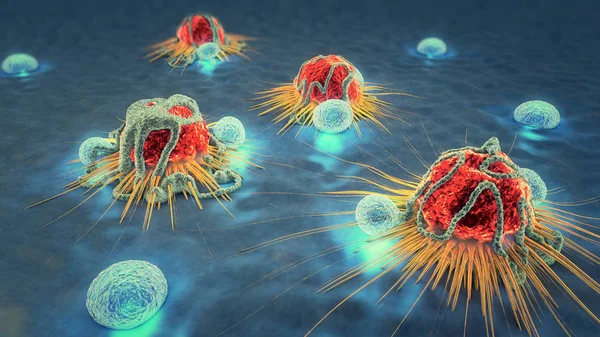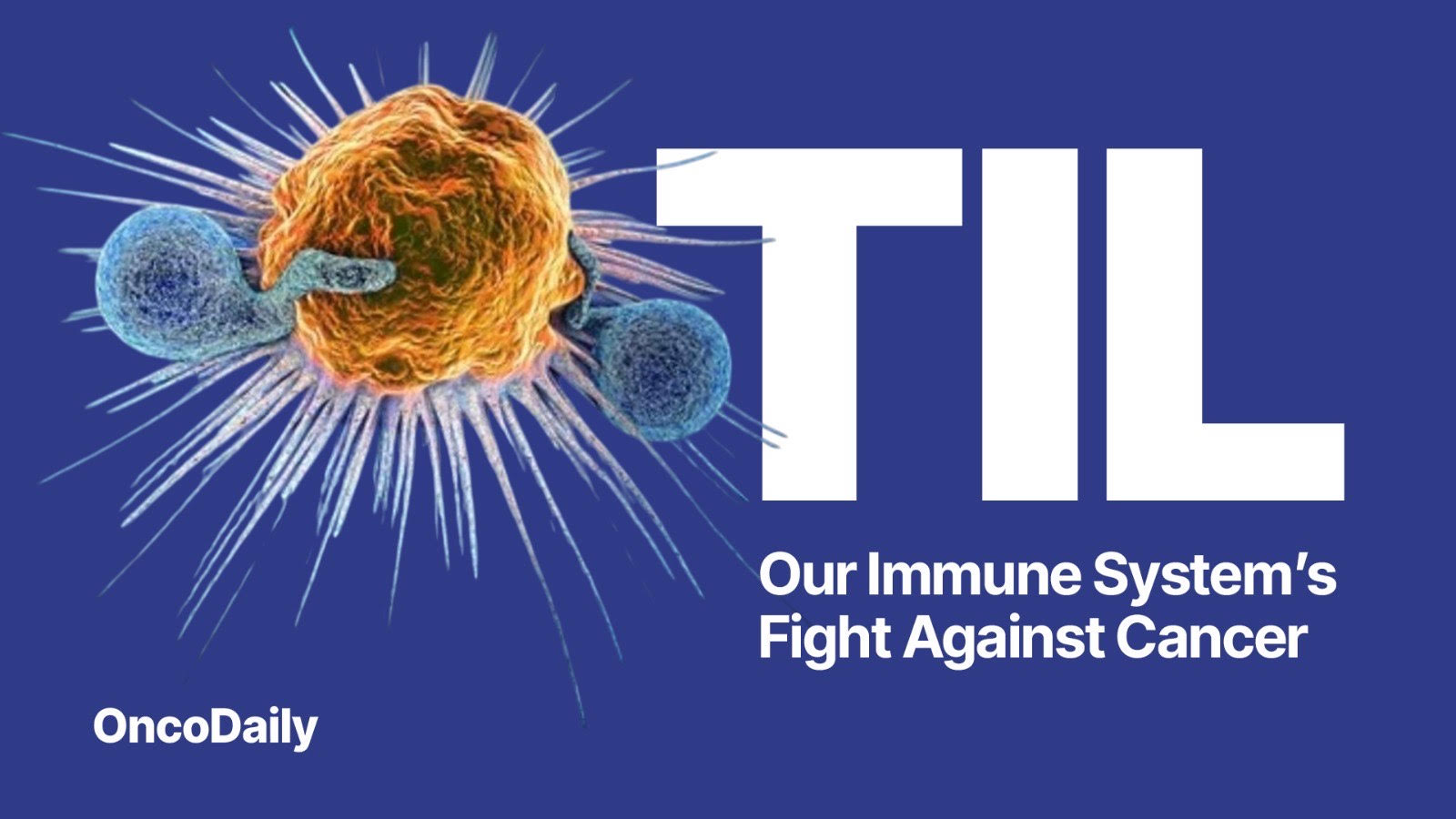Every day, billions of our cells divide, and sometimes mistakes happen. These mistakes can turn a normal cell into a tumor cell. Surprisingly, this is not rare — it happens constantly in every person’s body. Luckily, our immune system acts like a security guard, recognizing and destroying these dangerous cells before they cause trouble. Without this constant defense, tumors would form much more often.

Photo: Depositphotos
Our body has many ways to fight against tumor cells, and one of the most fascinating mechanisms involves Tumor-Infiltrating Lymphocytes (TILs). At first, the name might sound complicated, but don’t worry, let’s break it down and understand how this therapy works, step by step.
Immune System
Our bodies contain an enormous number of immune cells, and among them, lymphocytes play a key role in defending us against foreign invaders and abnormal cells. Each type of lymphocyte has a specific job, some detect threats, others neutralize, isolate, or even destroy harmful cells. In this article, we will focus on T cells and their different types, which are central to the fight against cancer.
One of the most remarkable types of T cells are Tumor-Infiltrating Lymphocytes (TILs). Their main job is to enter the tumor itself and try to destroy the cancer cells, or at the very least, prevent them from growing and spreading. Fatjona Pupuleku Kraja, Front. Immunol., 22 May 2025 Sec. Cancer Immunity and Immunotherapy Volume 16 – 2025.
But how exactly do TILs work? When cancer cells develop, they often carry mutations, and some of these mutations cause the tumor cells to display abnormal proteins on their surface. These abnormal proteins act like flags, allowing TILs to recognize which cells are dangerous and should be attacked. This is one of the main ways our immune system identifies tumor cells in the body.
In a natural immune response, Tumor-Infiltrating Lymphocytes (TILs) can become activated and begin attacking cancer cells. However, tumor cells often create an immunosuppressive microenvironment by producing inhibitory molecules, such as PD-L1, which bind to checkpoint receptors like PD-1 on TILs. This interaction leads to T cell exhaustion, a state in which TILs lose their proliferative capacity, cytokine production, and cytotoxic activity, making them less effective at controlling tumor growth.
One of the most remarkable aspects of TIL therapy is that it uses the patient’s own immune cells, making it a highly personalized form of treatment. Unlike chemotherapy or radiation, which can damage healthy cells along with cancer cells, TIL therapy specifically targets tumor cells, leaving normal tissues largely unharmed. This precision not only makes the therapy more effective but also results in fewer side effects, allowing patients to tolerate treatment better while their own immune system does most of the work. Blanca Navarro Rodrigo, August 29, 2025. Trends in Cancer, Volume 0, Issue 0.
How TIL Therapy Works: Step by Step
When a patient is selected for TIL therapy, the process begins with a surgical procedure to remove a small sample of the tumor. This sample contains the patient’s own TILs, which have naturally infiltrated the tumor in an attempt to fight it.
Once the tumor sample reaches the laboratory, scientists isolate the TILs from the tissue and begin to expand them in specialized culture conditions. Using growth factors such as interleukin-2 (IL-2), the TILs multiply into billions of highly active immune cells. During this process, exhausted or weak T cells are reactivated, regaining their full ability to attack cancer cells.
After sufficient expansion, the patient may receive a preconditioning regimen, such as lymphodepletion, to temporarily reduce other immune cells in the body. This creates “space” for the infused TILs to thrive and act effectively. The supercharged TILs are then reinfused intravenously, where they circulate, home to the tumor site, and begin recognizing and attacking the cancer cells.
Patients can trust this therapy because it uses their own immune cells, making it a natural extension of the body’s defense system. It is a highly controlled medical process carried out in specialized centers with strict safety standards, ensuring that the TILs remain healthy, active, and free from contamination.
How Reliable is TIL Therapy Against New Cancer Cells?
TIL therapy is based on the principle that the patient’s own immune cells are trained to recognize tumor-specific antigens, which makes them highly precise in targeting cancer cells. Once infused, these supercharged TILs circulate throughout the body, seeking out and destroying both existing tumor cells and, in many cases, new cancer cells that express the same abnormal proteins.
However, tumors can evolve over time, producing new mutations that may create slightly different neoantigens. While TILs are highly effective against cells carrying the antigens they were trained to recognize, they may be less effective against cancer cells that have completely changed their surface proteins. This is why TIL therapy is often combined with other immunotherapies, like checkpoint inhibitors, to enhance the immune system’s ability to adapt and continue attacking evolving tumor cells. “Shaik, R., Royyala, S.A., Inapanuri, B. et al. Tumor infiltration therapy: from FDA approval to next-generation approaches.” Clin Exp Med 25, 254 (2025).
Overall, TIL therapy is considered highly reliable and personalized, especially for cancers with many mutations, but like all treatments, it works best when integrated into a broader cancer management plan and under careful medical supervision.
Major oncology organizations such as the NCCN (National Comprehensive Cancer Network), ASCO (American Society of Clinical Oncology), and ESMO (European Society for Medical Oncology) recognize TIL therapy as a promising form of adoptive cell transfer immunotherapy, particularly for patients with advanced or metastatic cancers that no longer respond to standard treatments.
While still under investigation in clinical trials, these organizations highlight that TIL therapy has shown encouraging results, especially in melanoma, by harnessing the patient’s own immune cells to target tumors. Their guidelines emphasize that TIL therapy should currently be offered in specialized centers or clinical trial settings, ensuring safety and proper monitoring. Overall, these bodies suggest that TIL therapy has the potential to become a powerful addition to the arsenal of cancer immunotherapies in the near future.
What the Future Holds for TIL Therapy
TIL therapy represents one of the most innovative directions in modern oncology, and its future looks very promising. Unlike traditional treatments, it builds on the natural intelligence of the immune system, giving doctors the ability to “train” and expand tumor-fighting cells outside the body before sending them back in greater numbers and strength. As technology develops, researchers are exploring ways to make TILs even more effective—such as combining them with checkpoint inhibitors, gene editing to enhance their persistence, or applying them to a wider range of cancers beyond melanoma.
Scientists also aim to optimize how TILs are selected, grown, and reintroduced, making the process faster and more accessible for patients worldwide. With continuous support from major cancer research organizations and growing clinical evidence, TIL therapy is positioned to become a cornerstone of personalized cancer treatment, offering patients hope for longer survival, fewer side effects, and improved quality of life. Xie, N., Shen, G., Gao, W. et al. Neoantigens: promising targets for cancer therapy.”Sig Transduct Target Ther 8, 9 (2023).
You Can Also Read Tumor Markers: What They Are, How They Help and Their Role in Cancer Care by OncoDaily

Written by Anahit Mkrtchyan
FAQ
What is TIL therapy?
It is a type of immunotherapy that uses a patient’s own T cells (TILs) to attack cancer cells.
How do TILs recognize cancer cells?
TILs identify abnormal proteins (neoantigens) on the surface of tumor cells, which act as “flags” for the immune system.
Which cancers can be treated with TIL therapy?
Currently, it is most effective in melanoma, but research is expanding to other solid tumors.
How are TILs obtained for therapy?
TILs are collected from a sample of the patient’s tumor during a minor surgical procedure.
What happens to the TILs in the lab?
Scientists isolate and expand them using growth factors, restoring their strength and increasing their numbers to billions.
How are TILs given back to the patient?
They are reinfused intravenously into the patient after a preparatory regimen that makes room for them in the immune system.
Are there side effects?
Side effects are generally fewer than chemotherapy but may include fever, fatigue, or reactions to supportive treatments like IL-2.
Is TIL therapy safe?
Yes, when performed in specialized centers under strict protocols, it uses the patient’s own cells, reducing the risk of rejection.
Does TIL therapy cure cancer?
It is not a guaranteed cure but can shrink tumors, slow progression, and sometimes lead to long-term remission, especially in melanoma.
Is TIL therapy widely available?
It is still limited to specialized centers and clinical trials, but ongoing research aims to make it more accessible globally.
